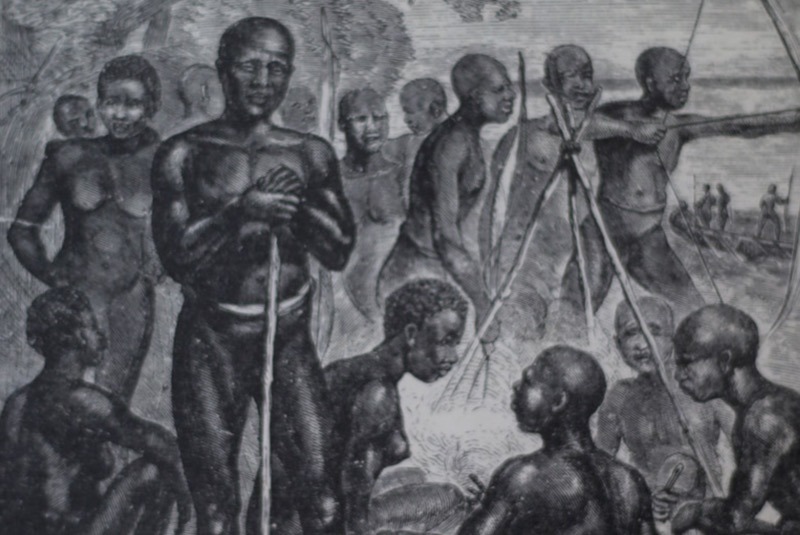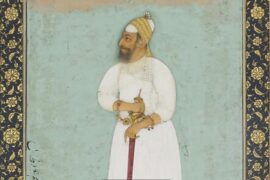Nestled in the azure expanse of the Bay of Bengal, North Sentinel Island, a part of the Andaman and Nicobar Archipelago, remains untouched by time and technology. The inhabitants of the island are called Sentinels. They are the guardians of their sacred region.
Unlike other indigenous groups, the sentinels have chosen isolation over integration, preserving their culture and way of life in complete autonomy. The Archipelago’s untouched beauty, encircled by coral reefs and dense forests, seems to whisper secrets of ancient times, yet what truly sets this island apart is its inhabitants—the Sentinelese.
The Sentinelese — estimated to number between 50 and 200 individuals — live in perfect harmony with their environment. Their survival depends on the island’s resources, which they manage with an almost supernatural sense of balance. They hunt, gather, and fish, using bows, arrows, and spears crafted with remarkable skill.
Their relationship with the land and sea is symbiotic. Such is their love for the island that they only take what they need, leaving the ecosystem as pristine as they found it.
In the late twentieth century, anthropologists and explorers tried to establish contact with the Sentinelese by giving them coconuts and tools as gifts. But they were either ignored or met with hostility. Most attempts failed. It became evident that the tribe’s isolation was not a result of ignorance but a deliberate choice.
Anthropologists have likened the Sentinelese to deities of the forest because of their role as guardians of the environment. They embody an ideal modern civilisation often struggles to achieve: coexistence with nature.
This speck of land is devoid of roads, buildings, or signs of modern civilisation. Thankfully, the Government of India has taken a firm stance in protecting the Sentinelese. The navy patrols the island to ensure no unauthorised persons breach the restricted zone.
Officially, the government considers the Sentinelese to be a sovereign people, free from the governance and interference of the Indian state. This decision is rooted in the understanding that their isolation is crucial for their survival.
Interestingly, no adventurer or explorer dares breach its boundaries. Those who have tried have met with mysterious fates, and their stories have become cautionary tales for others. Many myths associated with this island offer essential lessons for humanity.
Explorers who have attempted to approach the island — out of curiosity, for research, or to exploit natural resources — have often disappeared without a trace. It’s believed that sentinels have powers beyond human comprehension and have the ability to protect their land from intruders.
In 2006, two fishermen—unaware of the island’s restrictions—ventured too close while illegally poaching fish. The Sentinelese killed them, and their bodies were never recovered. Attempts by the Indian Coast Guard to retrieve their remains were met with a volley of arrows.
Those who come with harmful intentions never return. Their bodies vanish as though the island itself swallows them in retribution. The Sentinelese—with their bows and arrows—are seen not just as protectors of their tribe but as defenders of the sanctity of the environment. To harm their land is to invoke their wrath and perhaps the wrath of nature itself.
Among the many tales of Sentinel Island, one story stands out as a cautionary legend. In 2018, an American missionary named John Allen Chau attempted to contact the Sentinelese, driven by a desire to share his faith. He bribed local fishermen to take him close to the island despite legal restrictions.
Chau’s diary entries reveal his initial awe and trepidation. He described the Sentinelese as ‘short, with yellowish skin and bows twice their size.’ His attempts to communicate through gestures and offerings were met with aggression.
Undeterred, he ventured onto the island again, leaving behind a letter in which he called the Sentinelese ‘a blessed people’ and expressed his willingness to die for his mission. The following day, he was killed. His body, like so many before, was never recovered.
Over time, Sentinel Island has become a subject of fascination. Sentinel Island is a rare glimpse into humanity’s distant past, a living reminder of how our ancestors lived in harmony with nature. It’s a place where the rush of progress is irrelevant, and the only law is that of the jungle.
The Sentinel Island is more than just a tale of isolation; it’s a testament to a people’s resilience and the enduring power of nature. In an era of rapid urbanisation and environmental degradation, the Sentinelese stand as a stark reminder of what we have lost and what we stand to lose. Their refusal to succumb to external pressures is an act of defiance, not just against modernity but against mankind’s destructive tendencies.
To truly understand Sentinel Island, one must view it not as a relic of the past but as a beacon for the future. It challenges us to rethink our relationship with nature and to question the endless pursuit of growth and consumption. Perhaps the Sentinelese are not gods in the literal sense, but their way of life holds a divine truth—that the earth thrives when left to its own rhythms.
-30-
Copyright©Madras Courier, All Rights Reserved. You may share using our article tools. Please don't cut articles from madrascourier.com and redistribute by email, post to the web, mobile phone or social media.Please send in your feed back and comments to [email protected]











